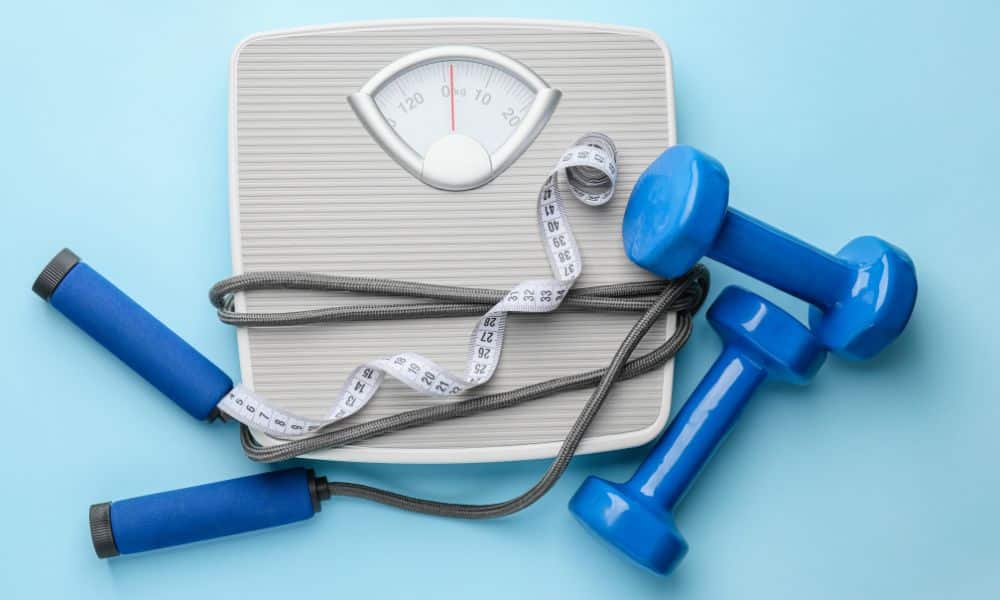In the realm of fitness and health, understanding and managing your calorie intake and expenditure is crucial. Calorie calculators have become indispensable tools for those looking to control their weight, improve their health, or enhance their athletic performance. This article delves into the nuances of calorie calculators, evaluating their accuracy, comparing different types, and exploring alternative methods for managing caloric balance.
Understanding Calories: Their Role in Fitness and Nutrition
Calories are a unit of energy measurement, essential in the context of diet and exercise. They measure the amount of energy provided by food and drinks, as well as the energy expended during physical activities.
In nutritional terms, calories are crucial for understanding how much energy your body receives from your diet, which is pivotal for weight management and overall health. Similarly, when it comes to exercise, calories measure the energy expended, allowing individuals to balance their energy input and output effectively. This balance is the cornerstone of weight management – consuming more calories than you burn leads to weight gain, while a caloric deficit leads to weight loss. For fitness enthusiasts, tracking calorie intake and expenditure is a fundamental aspect of reaching specific goals, whether it’s building muscle, losing fat, or improving endurance.
The number of calories consumed and burned can also reflect one’s fitness level; a higher caloric burn during exercise often indicates improved cardiovascular health and muscular efficiency. Understanding and managing calorie intake and expenditure is thus a key component in tailoring a fitness regimen that aligns with individual health and fitness objectives, leading to more effective and sustainable results.
Understanding Calorie Calculators:

What Are They?
A calorie calculator is a tool that estimates the number of calories you need to consume to maintain, lose, or gain weight. It typically considers factors like age, gender, weight, height, and activity level. Some advanced calculators also factor in body composition and specific goals.
How Accurate Are They?
While calorie calculators provide a useful starting point, their accuracy can vary. Factors such as metabolic rate, muscle mass, and daily activity levels can differ significantly between individuals. Therefore, while these calculators offer an estimated caloric intake, they should be used as a guideline rather than an absolute figure.
Best Calorie Calculators:
Several calorie calculators stand out for their user-friendly interfaces and comprehensive features:
1. MyFitnessPal: Renowned for its extensive food database and barcode scanner for easy food tracking.
2. Cronometer: Offers detailed nutrient tracking, appealing to those with specific dietary needs.
3. Fitbit App: Integrates calorie tracking with physical activity monitoring, ideal for those using Fitbit devices.
Each of these tools offers unique features, and the best choice depends on individual needs and preferences.
Maximizing the Use of Calorie Calculators:
To get the most out of a calorie calculator, follow these tips:
1. Be Honest and Detailed: Accurately log all food intake and physical activities for more precise calculations.
2. Regularly Update Your Information: As you lose or gain weight or change your activity level, update your details in the calculator.
3. Use it as a Guide: Listen to your body and adjust your calorie intake if you feel excessively hungry or lack energy.
Alternatives to Calorie Calculators:
While calorie calculators are helpful, they are not the only method to manage dietary and exercise plans:
Intuitive Eating:
This approach involves listening to your body’s hunger and fullness cues. It promotes a healthier relationship with food but may not provide the structure some individuals need.
Intuitive Eating offers a refreshing alternative to calorie calculators, focusing on internal cues rather than external metrics. This holistic approach encourages individuals to attune to their body’s hunger and satiety signals, promoting a more natural and mindful eating pattern.
By doing so, it shifts the focus from strict calorie counting to understanding and respecting the body’s needs. Intuitive eating emphasizes the importance of recognizing physical hunger and fullness, distinguishing these from emotional eating triggers. It fosters a healthier relationship with food, where eating becomes a response to physiological hunger rather than a reaction to controlled calorie counts.
This method can be particularly beneficial for those seeking to break free from the cycle of dieting and develop long-lasting, healthy eating habits. While it may not provide the structured approach needed for specific fitness goals like bodybuilding, it offers a path to improved well-being and a balanced lifestyle, aligning eating habits with the body’s innate wisdom.
Portion Control:
This method focuses on the size of food servings without counting calories. It’s simpler but may not be as precise for specific goals like bodybuilding or weight loss.
Portion control stands out as a practical alternative to calorie calculators, especially for those seeking simplicity in managing their diet. This method focuses on regulating the size of food servings, a straightforward approach that doesn’t necessitate meticulous calorie counting.
By understanding and adhering to recommended portion sizes, individuals can effectively manage their food intake, contributing to weight management and nutritional balance. Portion control encourages a mindful approach to eating, where attention is paid to the quantity of food consumed, helping to prevent overeating. It’s particularly advantageous for those who find the detailed tracking required by calorie calculators cumbersome or stressful. While it may not offer the precision needed for specific dietary goals, such as in competitive bodybuilding, portion control is an excellent strategy for maintaining a healthy lifestyle, ensuring a varied and balanced diet without the complexity of counting every calorie.
This approach is not only beneficial for weight management but also promotes a healthier relationship with food, as it aligns eating habits with the body’s natural needs and satiety signals.
Tracking Macros:
Instead of focusing solely on calories, this method tracks the intake of proteins, fats, and carbohydrates. It’s particularly popular among athletes and bodybuilders.
Tracking macronutrients, or “macros,” presents a comprehensive alternative to calorie calculators for those focused on specific dietary goals. This method involves monitoring the intake of proteins, carbohydrates, and fats, offering a balanced perspective on nutritional needs. Unlike calorie counting which provides a singular focus on energy intake, tracking macros ensures a more holistic approach to diet, emphasizing the quality and type of nutrients consumed. It is particularly favored in fitness communities, such as bodybuilding and athletic training, where precise nutritional balance is key to optimizing performance and body composition.
By adjusting macro ratios according to individual goals – whether it’s muscle gain, fat loss, or maintaining energy for endurance sports – this method provides a tailored dietary framework. It requires a deeper understanding of food composition and a commitment to detailed tracking, but the payoff is a diet that supports specific health and fitness objectives effectively. Macro tracking not only aids in achieving physical goals but also educates about the nutritional value of food, leading to more informed and health-conscious dietary choices.
Pros and Cons:

Intuitive Eating:
Pros: Reduces stress around food, promotes a healthy relationship with eating.
Cons: May not provide enough guidance for specific fitness goals.
Portion Control:
Pros: Simple, doesn’t require extensive tracking.
Cons: Less precision, which can be an issue for goal-specific diets.
Tracking Macros:
Pros: Offers a balanced approach to nutrition.
Cons: Requires more effort and knowledge about macronutrient requirements.
Conclusion:
Calorie calculators are valuable tools in the quest for health and fitness goals. Their effectiveness lies in their ability to provide personalized dietary and exercise guidelines.
However, it’s important to understand their limitations and complement them with other methods like intuitive eating, portion control, or tracking macros. Ultimately, the best approach is one that aligns with your lifestyle, preferences, and goals, providing a sustainable path to achieving and maintaining optimal health.
For more insights into health and fitness, visit TF Clark Fitness Magazine . Stay informed, stay inspired!





In conclusion, PromptScroll isn’t just different; it’s a step ahead. It’s not just an assistant; it’s your partner in the creative process, understanding your needs and enhancing your capabilities. With PromptScroll, you’re not just keeping up with the digital evolution; you’re leading it. Welcome to the future of content creation, where AI is your ally, and the possibilities are endless.
I enjoyed it just as much as you will be able to accomplish here. You should be apprehensive about providing the following, but the sketch is lovely and the writing is stylish; yet, you should definitely return back as you will be doing this walk so frequently.
I have no idea how I got here, but I thought this post used to be fantastic.
Lovely! This has been an absolutely fantastic post. I appreciate you sharing these specifics.
I had a great time with that, too. Despite the high quality of the visuals and the prose, you find yourself eagerly anticipating what happens next. If you decide to defend this walk, it will basically be the same every time.